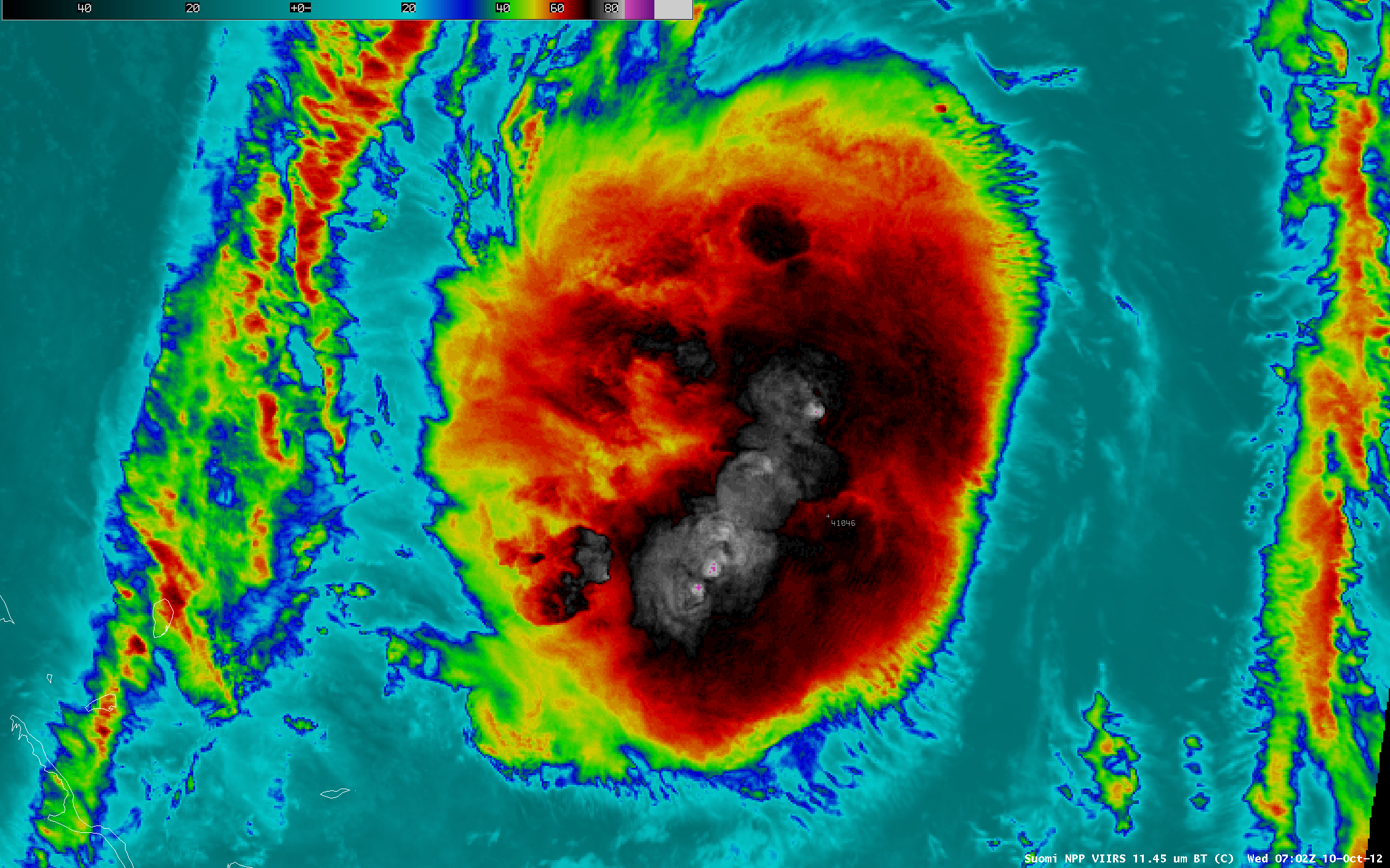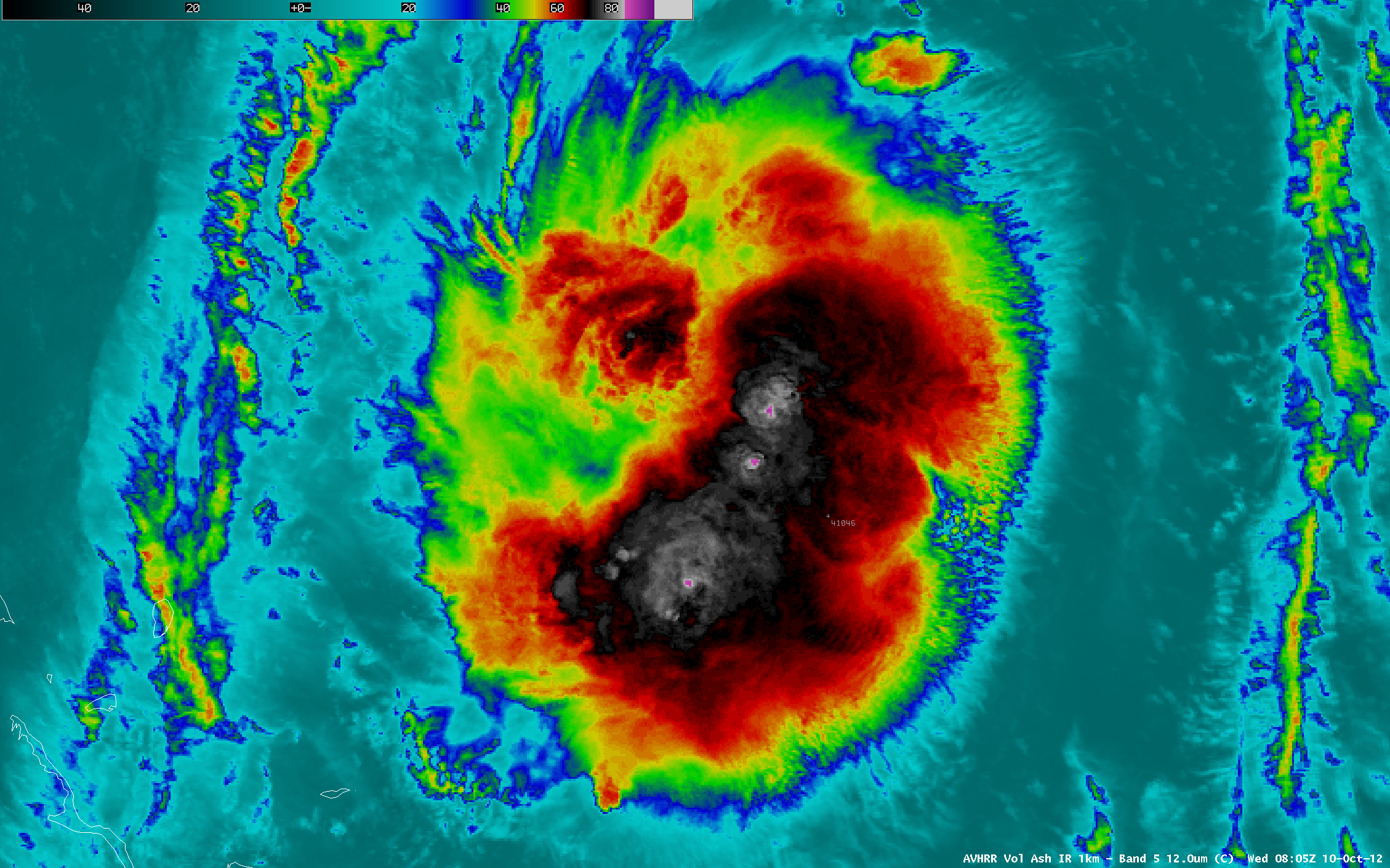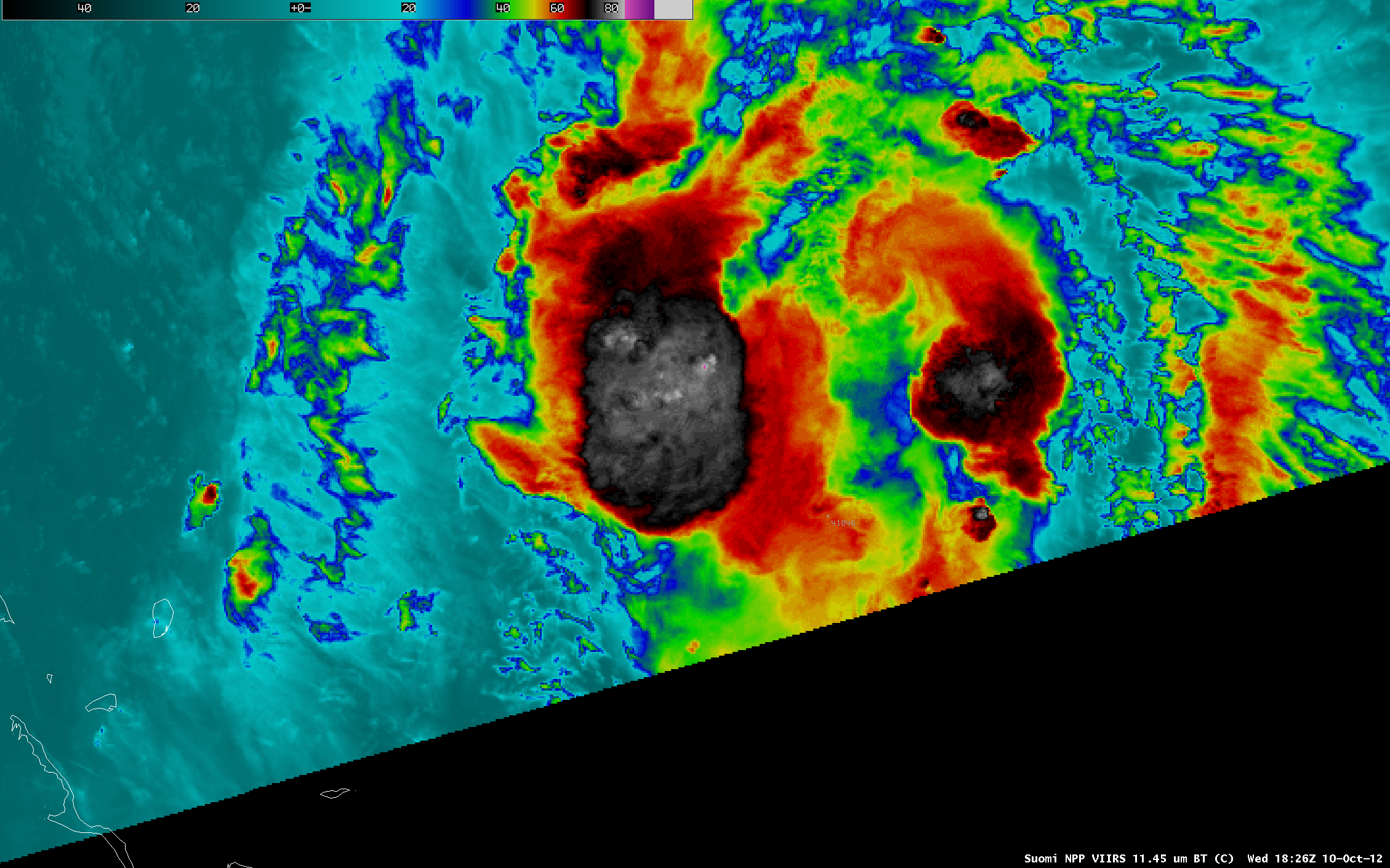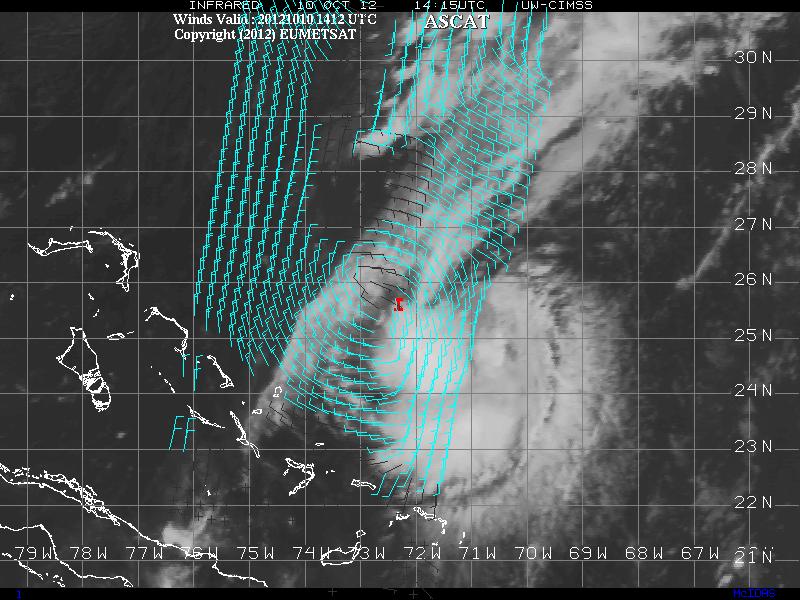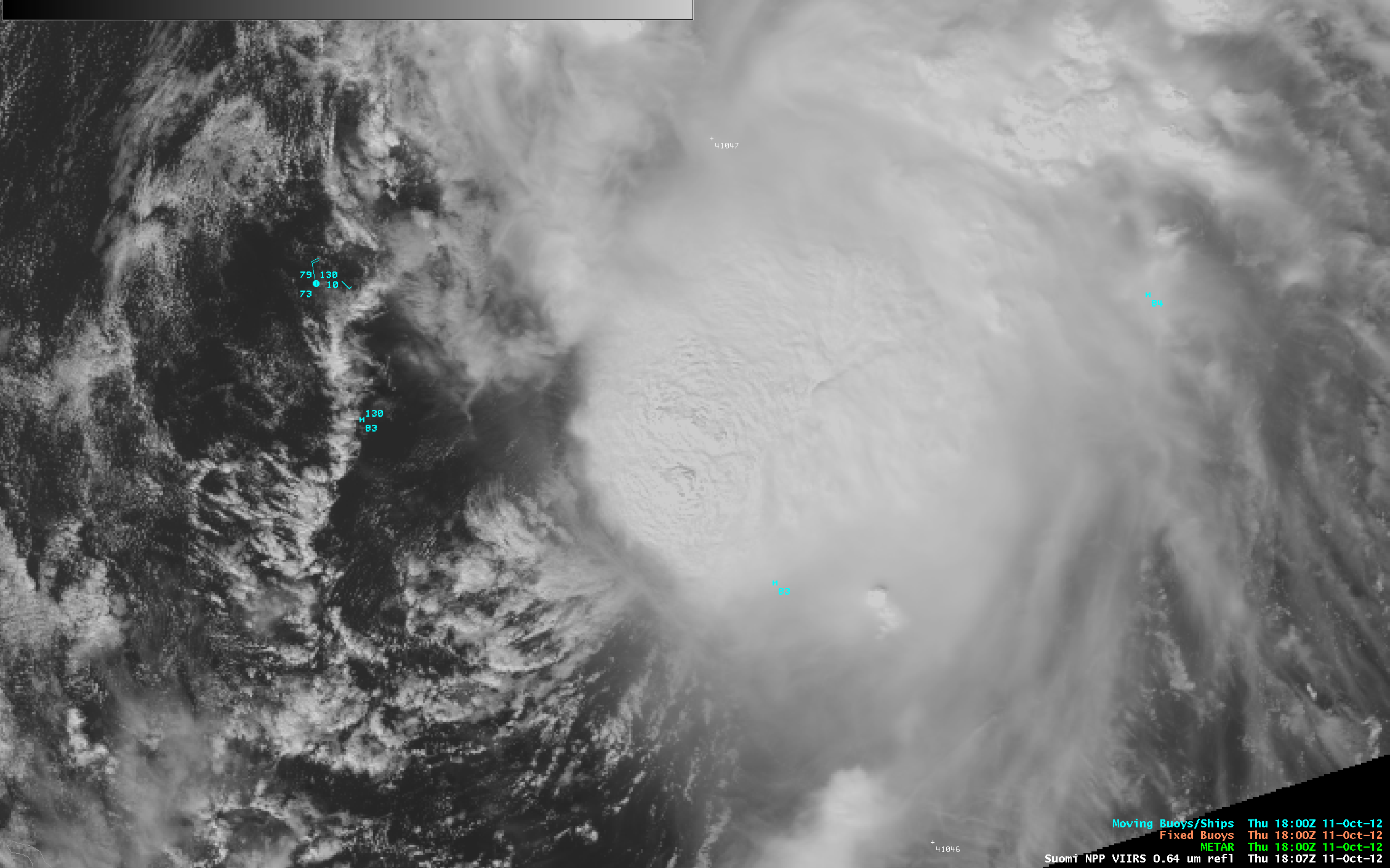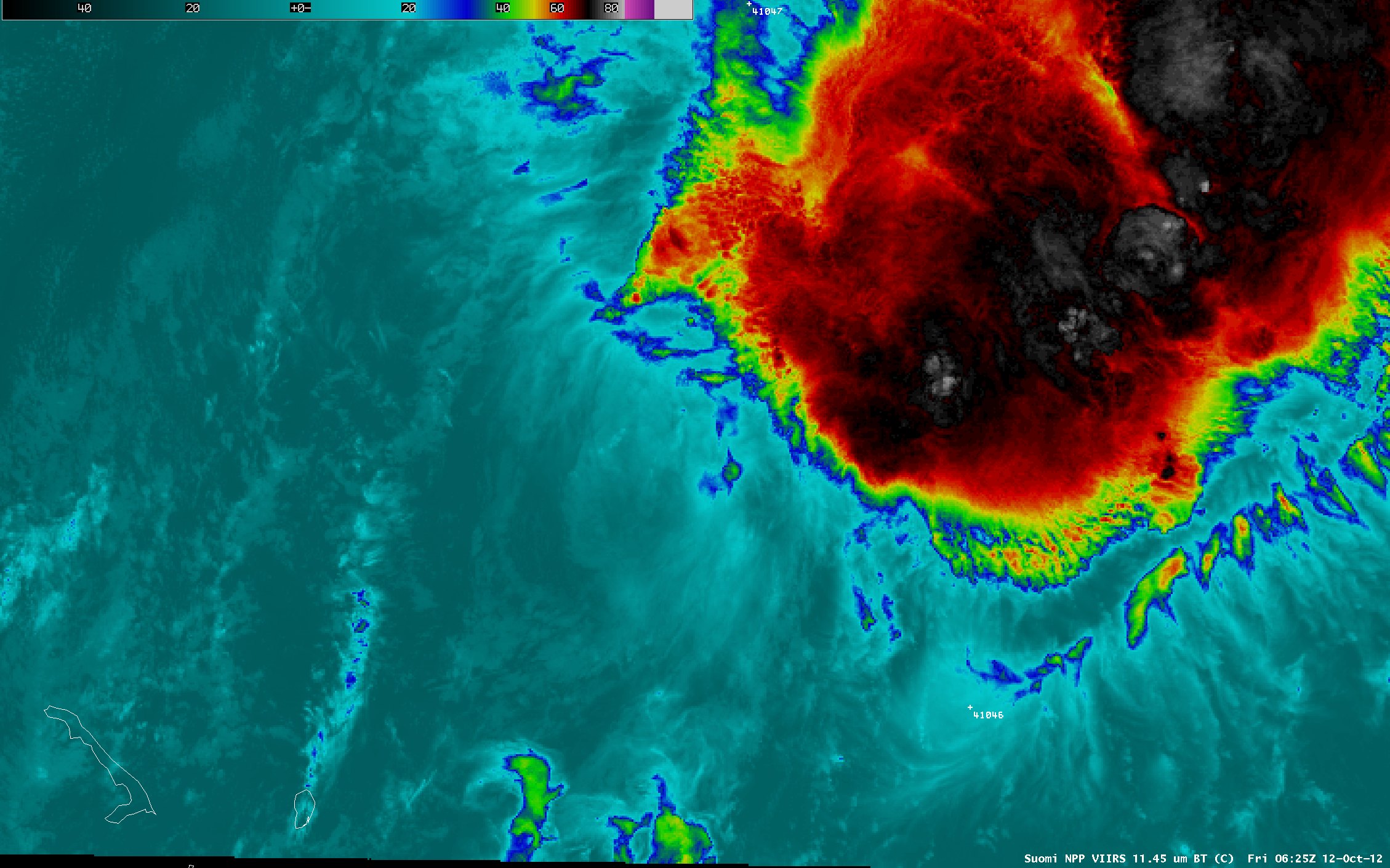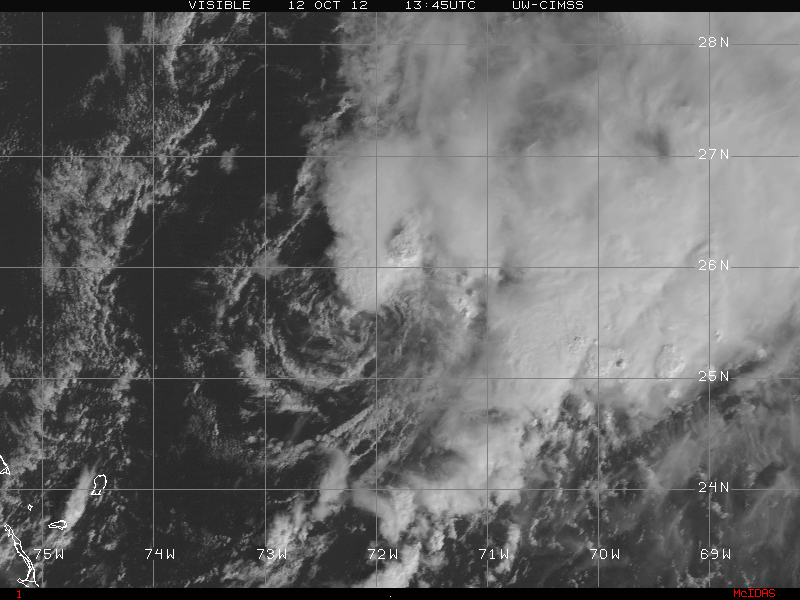Convective bursts associated with Invest 97L (Tropical Storm Patty)
A night-time (just after 07 UTC) comparison of AWIPS images of 375-meter resolution (mapped onto a 1-km AWIPS grid) Suomi NPP VIIRS 11.45 µm IR and 4-km resolution GOES-14 10.7 µm IR channel data (above) showed deep convection associated with tropical cyclone Invest 97L located to the east of the Bahamas on 10 October 2012. Cloud top IR brightness temperatures were as cold as -87 C on the VIIRS images, compared to -80 C on the GOES image. Also note the parallax shift on the GOES image, with features appearing to be located farther to the north and west due to the geostationary satellite viewing angle.
About 90 minutes later, a similar comparison of 1-km resolution POES AVHRR 12.0 µm IR and 4-km resolution GOES-14 10.7 µm IR channel data (below) again showed a significant difference in the coldest cloud top IR brightness temperatures seen (-89 C on AVHRR vs -79 C on GOES). Note the appearance of cloud-top gravity waves propagating along the southeastern quadrant of the convective cluster on the VIIRS and AVHRR IR images.
During the afternoon hours, a comparison of 1-km resolution MODIS 12.0 µm IR and 4-km resolution GOES-14 10.7 µm IR data (below) showed an even larger difference between the coldest cloud top IR brightness temperatures (-92 C on MODIS, -79 C on GOES).
An animation of GOES-14 10.7 µm IR channel images with an overlay of ASCAT surface scatterometer winds at 14:12 UTC from the CIMSS Tropical Cyclones site (below) suggested that much of these deep convective bursts were occurring to the southeast of the low-level circulation center.
===== 11 October Update =====
Invest 97L was classified as Tropical Storm Patty by the National Hurricane Center on 11 October. A comparison of Suomi NPP VIIRS 0.64 µ visible channel and 11.45 µm IR channel images (below) showed that the deep convection persisted, with IR cloud top temperatures as cold as -90º C (violet color enhancement).
===== 12 October Update =====
Due to persistent southwesterly wind shear, the low-level circulation center of Tropical Storm Patty became increasingly decoupled from the deep convection. The night-time circular signature of the low-level circulation center can be seen on 06:25 UTC (2:25 AM local time) Suomi NPP VIIRS 0.8 µm Day/Night Band and 3.74 µm shortwave IR images (above). Subsequent daytime GOES-14 visible images on 12 October 2012 showed the low-level circulation center became completely exposed (below).


